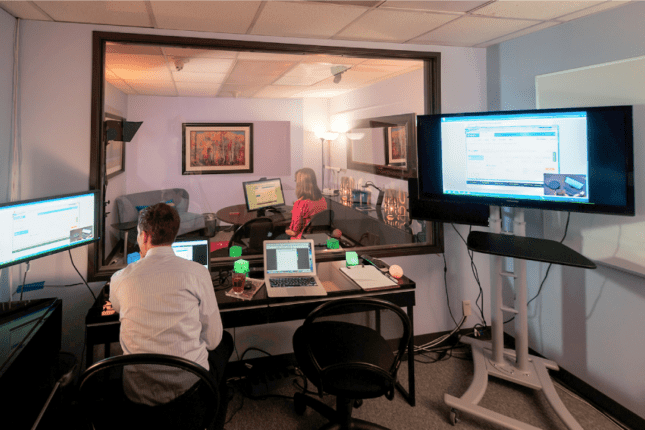When it comes to testing the usability and accessibility of products or services, two distinct approaches are commonly used: usability testing and compliance testing. While both methodologies play crucial roles in creating inclusive and user-friendly experiences, they differ in objectives, focus areas, and evaluation criteria. In this blog, we will explore the key aspects of usability testing and compliance testing, highlighting their similarities, differences, and considerations for each methodology.
Usability testing
Usability testing focuses on evaluating the overall user experience, effectiveness, and efficiency of a product or service. It aims to identify general usability issues, improve design and functionality, and enhance user satisfaction. The testing process involves diverse users representing the target audience, including those without disabilities. Usability testing evaluates criteria such as ease of use, learnability, efficiency, memorability, error prevention, and overall user satisfaction. It is an iterative process, with multiple rounds of testing and feedback collection leading to continuous improvement.
Compliance testing
Compliance testing, on the other hand, assesses whether a product or service adheres to specific accessibility standards and guidelines. It specifically focuses on evaluating the accessibility of a product or service for people with disabilities. Compliance testing often involves recruiting individuals with disabilities who represent the intended user base. The evaluation criteria include aspects such as keyboard accessibility, color contrast, screen reader compatibility, alt text for images, and other accessibility-related criteria. While iterative processes can be involved, the primary focus is on assessing the product’s compliance with accessibility standards rather than driving iterative design changes.
Considering both usability testing and compliance testing in the development process ensures that products and services are both user-friendly and accessible to all people, creating inclusive and delightful experiences.
Key aspects of usability testing
- Task Performance: Participants are asked to perform various tasks representative of the product’s intended use, evaluating their effectiveness in completing these tasks and navigating through the interface.
- User Feedback: Participants provide subjective feedback on their experience, identifying usability issues and providing insights into user expectations and preferences.
- Iterative Design: Usability testing is often conducted iteratively, with each round informing design changes and improvements.
Key aspects of compliance testing
- Conformance: Compliance testing assesses whether a product meets specific accessibility requirements outlined in standards and guidelines such as WCAG, focusing on criteria like keyboard accessibility, color contrast, and screen reader compatibility.
- Objective Evaluation: Compliance testing provides an objective assessment of the product’s compliance level with defined accessibility criteria.
- Automated Testing: Accessibility compliance testing often utilizes automated tools to scan for potential accessibility issues and generate reports highlighting areas that require attention.
Similarities between usability testing and compliance testing
- User-Centered Approach: Both methodologies emphasize considering the needs and experiences of users.
- Test Participants: Both involve recruiting representative users to evaluate the product or service.
- Task-Based Evaluation: Both methodologies utilize specific tasks to assess how users interact with the product.
- Iterative Nature: Both approaches follow an iterative process, allowing for continuous refinement.
- Feedback Collection: Both rely on gathering feedback from participants to identify issues and improve the product.
- Improvements: Both methods aim to address issues and enhance the quality and user experience of the product.
- Combination of Methods: Both can benefit from a combination of qualitative and quantitative approaches.
Differences between usability testing and compliance testing
- Objective: Usability testing focuses on overall user experience, while compliance testing assesses adherence to accessibility standards.
- Focus: Usability testing covers general usability, while compliance testing specifically evaluates accessibility for people with disabilities.
- Evaluation Criteria: Usability testing assesses aspects like ease of use and learnability, while compliance testing focuses on accessibility-related criteria.
- Test Participants: Usability testing involves a diverse range of users, while compliance testing specifically recruits people with disabilities.
- Iterative Process: Usability testing is driven by iterative design changes, whereas compliance testing focuses on accessibility standards.
Summary
Usability testing and compliance testing are two distinct methodologies used to evaluate the user experience and accessibility of products or services. Usability testing focuses on overall user experience, effectiveness, and efficiency, aiming to identify general usability issues and improve design. Compliance testing, on the other hand, assesses adherence to specific accessibility standards and guidelines, specifically evaluating the accessibility of a product or service for people with disabilities.
Both methodologies involve recruiting representative users, utilizing task-based evaluation, following an iterative process, and collecting feedback to improve the product. However, they differ in their objectives, focus areas, and evaluation criteria. Usability testing assesses general usability, while compliance testing focuses on accessibility. Usability testing involves a diverse range of users, while compliance testing specifically recruits people with disabilities.
Considering both usability testing and compliance testing in the development process ensures that products and services are both user-friendly and accessible to all people, creating inclusive and delightful experiences.
We’re here to help
It doesn’t matter if the concept of accessibility is brand new to you or if you have an established accessibility program, we’re always available to listen, chat, or help answer questions. Reach out to us if you would like to talk with one of our accessibility subject matter experts.
Resources you may find useful
- Usability testing
- The Nielsen Norman Group is a highly regarded UX research and consulting firm that provides valuable insights and resources on usability testing.
- Digital.gov (formally Usability.gov) is an official website of the U.S. government that provides guidance on usability and user-centered design.
- Usability Testing How-To by UserTesting is a leading user research platform that offers a comprehensive guide on how to conduct usability testing.
- Smashing Magazine is a popular online publication that covers various aspects of design and user experience.
- Web Accessibility Initiative (WAI) by World Wide Web Consortium (W3C) is a key organization that develops guidelines and resources for web accessibility.
- WebAIM is a leading organization dedicated to web accessibility. Their website offers a wide range of resources, including accessibility evaluation tools, tutorials, articles, and WCAG compliance guidelines.
- The A11Y Project is a community-driven initiative that aims to promote accessibility awareness and provide practical resources.






